Don M. Winn's Blog, page 2
November 15, 2022
Dyslexia and Heroes of Self-Reference
Dyslexia and Heroes of Self-Reference
You can listen to this blog.Reading can be a daunting task for anyone, but when dyslexia is added to the mix, it can feel like an insurmountable challenge. One tool that can encourage struggling readers is to find books with a hero of self-reference. A hero of self-reference is a person or storybook character who has feelings and struggles like the reader does, making the character relatable to the child. When the child sees the character growing and discovering their strengths, it creates hope in the reader that they will be able to do so as well.
Thankfully, there are plenty of heroes out there, both fictional and in real life, who have struggled with reading and writing just like you or your child. Here are a few of our favorite books about dyslexia with heroes of self-reference that may inspire a young reader to remember they are not alone.
My Name is Brain Brian by Jeanne Betancourt tells the story of a boy who is about to enter sixth grade and is dreading it. After all, every year in school has felt like torture. But this year, he has a different experience! His teacher notices that he is dyslexic and learns differently. He isn’t stupid or lazy after all!
Thank You, Mr. Falker features a girl named Trisha who has dyslexia, and is convinced she will never catch up to her classmates. Author Patricia Polacco writes this autobiographical, endearing story of her experiences with dyslexia, low self-esteem, and bullying, and the teacher who encouraged her to believe in herself and discover her strengths.

In the Sir Kaye the Boy Knight series, Kaye’s best friend Reggie struggles with reading and writing. However, each book focuses on his process of finding his strengths to help him succeed. This character is a good reminder that everyone has their own gifts and talents that they might not know about until they begin to explore their full potential.
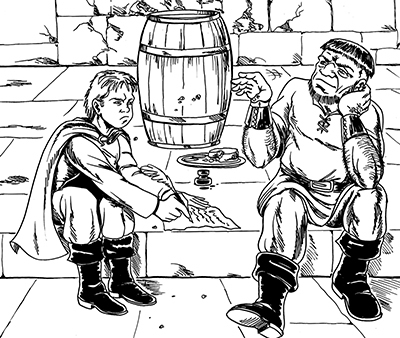
Other great examples of books that portray characters overcoming obstacles associated with learning issues include The Curious Incident of the Dog in the Night-Time by Mark Haddon and Wonder by R.J. Palacio. Both these books feature young protagonists who struggle with reading but have the strength to persevere and find success in the end. By being exposed to literature that depicts strong characters who battle dyslexia, young readers can take heart in knowing that they are not alone in their struggle.
Real-life dyslexic learners can also serve as inspiration for young readers. Knowing about celebrities with dyslexia such as Tom Cruise, Jennifer Anniston, Keira Knightley, and many others may inspire dyslexic children to realize their abilities.
For example, young adults with dyslexia can experience unique struggles when trying to advance in the workplace. Knightley, the actress famous for her roles in The Pirates of the Caribbean and its sequels, Pride & Prejudice, and Atonement, once said in an interview that she was bullied throughout school because of her reading difficulties. Her subsequent inability to read large blocks of text made completing a law degree extremely difficult. She eventually dropped out of law school to pursue an acting career instead.
Knightley credits various screenplays for helping her overcome her dyslexia, saying “My film career has been my salvation . . . I have to read very small sections of a script at a time because my processing speed is so slow.” In an interview on PBS NewsHour, she even goes so far as to say that she chose the roles she has played because of the way they relate to her own experiences with dyslexia.
Knightley also credits her role in The Goonies—a 1985 film about a ragtag group of kids who band together to protect their homes from a group of greedy land developers—as a turning point in her career. According to Knightley, “I had to prove to myself that I could get through a book and then come back later and have to learn scripts. I had dyslexia, so I really had to work.” Ultimately, she was able to tap into her passion for acting and become one of the most sought-after actresses in Hollywood.

It’s hard not to feel a little inadequate if you compare yourself to seemingly flawless people around you, but it’s important to remember that everyone has their own strengths and weaknesses. So the next time you or your child is having a hard day, think about your favorite character from a book or a movie or even real life, and how they overcame their own obstacles to become the best versions of themselves.
Thank you for reading about dyslexia and heroes of self-reference. For a thorough discussion of dyslexia, you may enjoy the second edition of my award-winning book Raising a Child with Dyslexia: What Every Parent Needs to Know, available in softcover, hardcover, eBook, and audio. In addition to facts on testing and accommodation, my book gives you the tools to provide the social and emotional support children with dyslexia require.
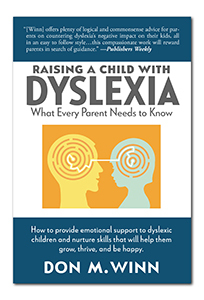
And to learn more about how every student best learns to read, you may also enjoy Failing Students or Failing Schools? A Parent’s Guide to Reading Instruction and Intervention, by reading specialist and shortlisted World Literacy Award nominee Faith Borkowsky.
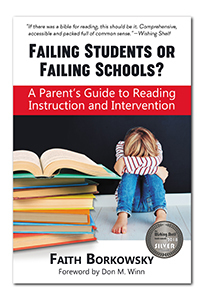
Cardboard Box Adventures picture books are great for shared reading and can help parents establish a strong preliteracy foundation for their children. Check out the CBA Catalog for a full list of award-winning picture books, chapter books, and resources for parents and educators. Visit my Amazon author page for more information.
Further Information:
Famous people with dyslexia (https://www.readandspell.com/us/famous-people-with-dyslexia)20 Powerful and Inspirational Dyslexia Quotes and Sayings (https://greetingideas.com/positive-dyslexia-quotes-sayings/)12 Famous People Who Struggled With Dyslexia Before Changing The World (https://journal.imse.com/12-famous-people-who-struggled-with-dyslexia-before-changing-the-world/)Celebrities with dyslexia, ADHD, and dyscalculia (https://www.understood.org/en/articles/success-stories-celebrities-with-dyslexia-adhd-and-dyscalculia)Famous People with Dyslexia [A List of 200+ Actors, Athletes, Musicians & Scientists] (https://blog.ongig.com/diversity-and-inclusion/famous-people-with-dyslexia/)The post Dyslexia and Heroes of Self-Reference appeared first on Author Don Winn's Blog.
October 27, 2022
Shame Can Affect Your Health
Shame Can Affect Your Health
You can listen to this blog.Shame is a powerful emotion that can have significant effects on our physical and emotional health. Recent studies have shown that feeling shame reduces immunity, lowers cognitive function, and elevates inflammatory processes. Understanding the relationship between shame and health can help people to feel more empowered and better able to take control of their lives.
Research has shown that certain populations experience higher rates of shame than others. This is especially true for those with dyslexia and its sibling conditions, such as dyscalculia and dysgraphia. This is, in part, because they have to work harder and longer to understand the world around them and often make mistakes as a result.
According to experts from the Science of Behavior Change Research Institute at the University of Massachusetts Medical School, shame is a highly unpleasant emotional experience. It is characterized by feelings of inadequacy and guilt that may either be overperceived or may result from actual differences in a person’s abilities.
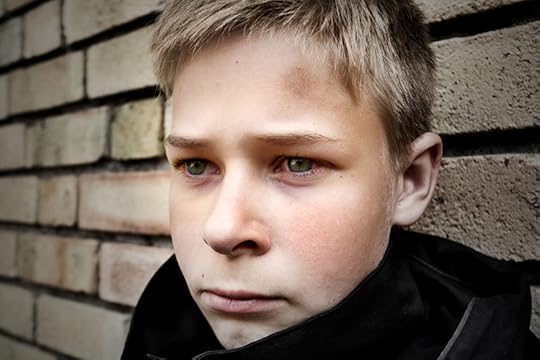
Shame can affect emotional health. People who feel shame often experience negative emotions like anxiety, depression, stress, anger, loneliness, and isolation. Feelings of shame can make people feel as though they are unworthy of love and belonging. This can lead to further social exclusion and increase the likelihood that people will engage in unhealthy or risky behaviors such as substance abuse.
It is also important to be aware of the ways that shame can affect the lives of people with learning differences. Many people who are diagnosed with dyslexia also deal with other struggles such as social anxiety, perfectionism, and depression. These additional challenges can make the experience of having dyslexia even more stressful and can result in higher levels of shame and self-criticism.
Shame can affect physical health too. Feeling ashamed, at least occasionally, is fairly common for most people; however, people who feel shame on a regular basis may experience more serious symptoms that can be detrimental to their health and well-being.
Sally Dickerson, PhD, of Pace University in New York has studied the effects of shame extensively. In her article, “Shame and the Dismantling of the Self,” she writes that “Shame is an emotional response that occurs when we attribute our shortcomings to an intrinsic flaw in ourselves.” She goes on to say that “the core belief underlying shame is that we lack something that makes us worthy and valuable…the more unworthy we feel about ourselves the more shame we are likely to feel.” Shame can become a vicious cycle when we are unable to forgive ourselves for our mistakes and imperfections.
Her studies of shame’s effects on health are profoundly impactful. One such study entitled “Immunological Effects of Induced Shame and Guilt” documented that people who wrote about traumatic events in their life where they blamed themselves developed very different body chemistry than participants who wrote about events in their lives that they viewed to be neutral.
Participants who were made to feel ashamed had lower production of white cells and higher levels of the cytokine interleukin-6 in their blood than those who were merely upset. Elevated levels of interleukin-6 are associated with increased inflammation and decreased immune function.
The research team also found that participants who had high levels of interleukin-6 were more likely to report symptoms of depression or anxiety and were less likely to participate in physical activity.
Another research study conducted by Dr. Dickerson in conjunction with the University of North Carolina School of Medicine found that students who reported experiencing feelings of shame were significantly more likely to experience headaches and digestive issues than those who did not experience any shame. These students also reported a higher level of overall pain, higher levels of depressive symptoms, and lower levels of self-esteem and overall health than their peers who reported no shame.
Shame can affect the brain’s health too. Researcher Cesare Cavalera, PhD, of the Catholic University of the Sacred Heart has documented the fact that negative emotions including shame can cause a reduction in working memory. This reduction can impact learning as well as other day-to-day functions.
Studies have shown that those who are shamed can have difficulty making decisions and can even become suicidal. In Cavalera’s writings, he discusses the devastating impact shame can have on a person’s sense of self as well as on their ability to make sound decisions. Shame impacts our ability to form and maintain healthy relationships both at work and at home. It also influences how we view ourselves and how others view us. In extreme cases, it can lead to the inability to function effectively at all.
Because shame can affect health in so many ways, it’s important to provide emotional support to young dyslexic learners and those with other learning difficulties. Proper emotional support can help to alleviate feelings of shame and hopefully reduce or eliminate the negative health consequences that accompany those feelings.
There are many different ways to approach the topic of shame with students who struggle with reading and/or math difficulties. Start by explaining that everyone has strengths and weaknesses. Emphasize that mistakes are just a part of life and learning and growing from them is an important part of being human. Don’t be afraid to acknowledge your own imperfections because human beings are far from perfect!
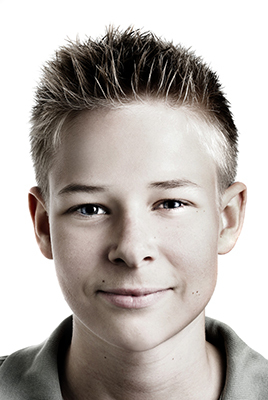
In order to combat feelings of shame, it is important for people with learning differences to have a strong support network comprised of friends and family who understand what they’re going through and can provide them with unconditional love and encouragement. In addition, people with learning disabilities can take steps to address their own feelings of shame by practicing self-care and making time for themselves each and every day.
For example, they can schedule time to relax with family and friends. It can help if they take time to get out of their heads and into their bodies through exercise like walking, stretching, swimming, etc.—taking a hot bath after a long day can help too. Overall, it is important to teach students that feelings of shame are completely normal and can be triggered by a number of different factors. Everyone feels a certain amount of shame from time to time, but it’s important to remember that it is a temporary feeling that will pass with time and support.
Disclosing feelings of shame or guilt can go a long way toward reducing stress and anxiety and improving health. Learning how to deal with long-term feelings of shame is a process that takes time and requires the assistance of trained professionals. It can sometimes be difficult to admit when you are struggling, but seeking help is a sign of strength, not weakness. If you or someone you love are struggling with feelings of shame and need help finding a solution, please reach out for support. You are not alone; there is help available.
Here are some warning signs that can signify that someone with learning disabilities is experiencing severe shame and/or self-hatred:
Isolation from others, disturbed sleep, and difficulty concentratingHealth problems like stomach issues and headachesReduced energy levels, and lack of interest in activities that they once enjoyedExcessive electronic usage, use of drugs or alcoholWithdrawal from society and/or avoidance of social situationsLow self-esteem leading to increased anxietyFeelings of guilt and inadequacySelf-doubt and insecurityAggressiveness, sadness, feelings of hopelessnessBear in mind that shame can be displayed in different ways and each person can experience it differently.
Thank you for reading about how shame can affect health. For a thorough discussion of dyslexia, you may enjoy the second edition of my award-winning book Raising a Child with Dyslexia: What Every Parent Needs to Know, available in softcover, hardcover, eBook, and audio. In addition to facts on testing and accommodation, my book gives you the tools to provide the social and emotional support children with dyslexia require.

And to learn more about how every student best learns to read, you may also enjoy Failing Students or Failing Schools? A Parent’s Guide to Reading Instruction and Intervention, by reading specialist and shortlisted World Literacy Award nominee Faith Borkowsky.

Cardboard Box Adventures picture books are great for shared reading and can help parents establish a strong preliteracy foundation for their children. Check out the CBA Catalog for a full list of award-winning picture books, chapter books, and resources for parents and educators. Visit my Amazon author page for more information.
References:
https://pubmed.ncbi.nlm.nih.gov/14747646/https://pubmed.ncbi.nlm.nih.gov/29800767/https://www.researchgate.net/publication/8208521_When_the_Social_Self_Is_Threatened_Shame_Physiology_and_Healthhttps://scienceofbehaviorchange.org/what-is-sobc/The post Shame Can Affect Your Health appeared first on Author Don Winn's Blog.
October 4, 2022
Playing Catch-Up with Education and COVID-19
Playing Catch-Up with Education and COVID-19
You can listen to this blog.COVID-19 has generated many “firsts,” as we are all well aware. One long-term impact of the virus is its effect on education. The gatekeeper for the data on this very important topic is called nationsreportcard.gov, and they have quite a story to tell. So as we embark on the 2022–2023 school year, it will be helpful to know what our kids are up against.
There were so many upsets to the continuity of the educational process during the lockdown and the ensuing months. Kids faced adjusting to remote learning platforms, having less social contact, dealing with technological shortcomings, and more. As a result, kids nationwide took a big hit to their skill sets.
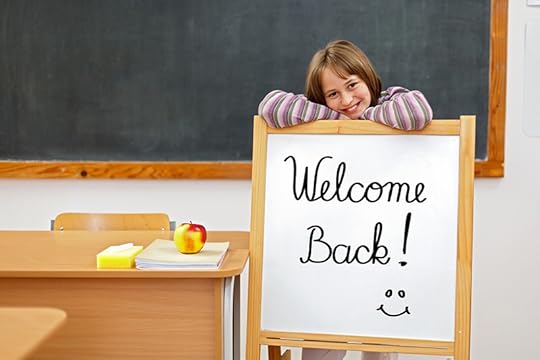
The National Assessment of Education Process, also known as the NAEP, began its work in 1969. Since then, it has continued to assess how much students in fourth, eighth, and twelfth grade know about various subjects. The NAEP works under the umbrella of the National Center for Education Statistics (NCES). In 2022, the NCES tasked the NAEP to perform a special Long-Term Trend assessment in mathematics and reading for all nine-year-old students.
So just how much are we playing catch-up with education and COVID-19?
According to the study, average scores for age 9 students in 2022 declined 5 points in reading and 7 points in mathematics compared to 2020. This is the largest average score decline in reading since 1990, and the first-ever score decline in mathematics.
And these were just the average levels of decline. As one would expect, the students who already struggled with reading and math dropped as many as 10 points in reading and 12 points in mathematics, an even more significant loss.
How can parents and teachers best help their kids recover?
I asked education expert and shortlisted World Literacy Award nominee Faith Borkowsky for her suggestions about playing catch-up with education and COVID-19.
Here is her response: “Covid learning-loss is real, but I don’t think it is entirely responsible for low literacy rates. Prior to the pandemic, we already knew that approximately two-thirds of students across the country were not reaching grade-level proficiency. Covid just exacerbated a problem that has existed for a while, and not surprisingly, it’s had its most significant impact on black and brown students who have been left further behind. For some families, remote learning opened opportunities for parents to seek help beyond their immediate areas. For the first time, I, personally, was able to meet with children in other states and parents from around the world.
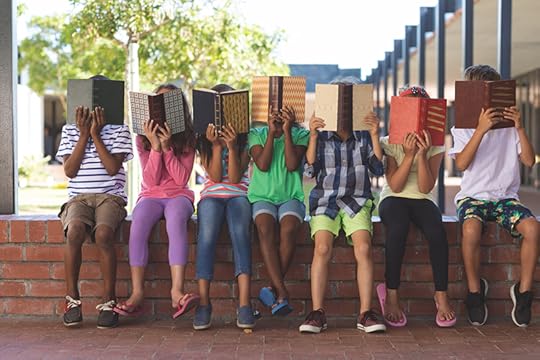
“Parents are now learning that they cannot be complacent. They must take an active role in making sure their children learn to read and write, even if they must do the job themselves. It might not be the parents’ job to teach their kids to read, but parents are dissatisfied; they are fed up with fighting school districts and receiving empty promises. “If they cannot afford tutoring, they are looking for no cost and low-cost options to learn how to do it themselves. I recently wrote a blog about the Hornet and Word Wasp manuals, which offer concrete, workable solutions for children who have fallen behind. I believe that more ‘do-it-yourself’ options are in demand, and this one is very effective. Such programs are structured, cumulative, and explicit, and they allow parents and tutors to use them without intensive training. I started a Facebook support group called Word Wasp USA Support, for anyone willing to give either manual a try.
“There are also some decodable books that are so well written that the instruction can be boiled down to ‘say the sounds and read the word.’ If parents just use the books in the prescribed order, the books would do the heavy lifting. The best ones offer multiple opportunities to engage with the alphabetic code and have built-in cyclical practice.
“Recently, there was a study that shows how parents, when trained, can offer instruction effectively. The research focused on phonemic awareness, but I don’t think the content matters. Most parents would gladly participate if given some guidance. Nobody will ever care about a child’s success like a parent.”
To learn more about how every student best learns to read, you may enjoy Failing Students or Failing Schools? A Parent’s Guide to Reading Instruction and Intervention, by reading specialist and shortlisted World Literacy Award nominee Faith Borkowsky.

And for a thorough discussion of dyslexia, you may enjoy the second edition of my award-winning book Raising a Child with Dyslexia: What Every Parent Needs to Know, available in softcover, hardcover, eBook, and audio.

Cardboard Box Adventures picture books are great for shared reading and can help parents establish a strong preliteracy foundation for their children. Check out the CBA Catalog for a full list of award-winning picture books, chapter books, and resources for parents and educators. Visit my Amazon author page for more information.
Reference:
https://www.nationsreportcard.gov/highlights/ltt/2022/
The post Playing Catch-Up with Education and COVID-19 appeared first on Author Don Winn's Blog.
September 20, 2022
Getting the Right Diagnosis with ADHD and Dyslexia
Getting the Right Diagnosis with ADHD and Dyslexia
You can listen to this blog.
Recognizing a child’s learning challenges is the first step toward getting them help. Sometimes, getting an accurate diagnosis for a kid with learning issues can be particularly difficult.
There are all the sibling conditions that often accompany a dyslexia diagnosis, and there can also be attention issues. One study notes that 25–40% of individuals who have ADHD are also dyslexic. When I encountered this study, it got me curious about how many students are being overlooked and only receiving a partial diagnosis and therefore inadequate intervention.
Since both conditions are highly heritable, we are talking about large numbers here. The current data states that dyslexia is 40–60% heritable, and ADHD is a whopping 77–88% heritable. And heritability isn’t all the two conditions have in common.
Why Getting the Right Diagnosis with ADHD and Dyslexia Can Be DifficultWhile kids with ADHD struggle to focus in all areas, kids with dyslexia suffer mental fatigue during challenging decoding tasks, and that can look like a loss of focus.
In terms of reading comprehension, both conditions can look very similar. A dyslexic student will struggle to decode words and will often try to guess based on the pictures in the book. A child with ADHD can exhibit impulsivity and try and rush through the task of reading and end up making guesses due to their impatience with the job at hand.
Dyslexics will struggle with phonemic awareness, and while that’s not usually a hallmark of kids with ADHD, their impulsive and impatient natures can make them skip words and lose their place in the reading. Students with ADHD have a low working memory, which can show up as a struggle to fluently connect parts of the page or paragraph, which will impact comprehension.

Writing issues affect both groups. Dyslexia makes spelling difficult, dysgraphia affects pencil grip, spacing, and getting thoughts down on a page, and ADHD affects the ability to organize thoughts, space words, and proofread.
When a child is getting tested, the areas where resistance is exhibited offer key insights. If the child is more compliant during some parts of the evaluation than others, dyslexia is more likely. If the child is struggling with all aspects of the testing, ADHD may be more likely. This is, of course, a great oversimplification, and as mentioned at the outset, a large number of kids have both conditions.
The takeaway here is to find a testing diagnostician who is well-versed in both dyslexia and ADD/ADHD to make sure your child gets the help and support they deserve.
Thank you for reading about why getting the right diagnosis with ADHD and dyslexia is important. For a thorough discussion of dyslexia, you may enjoy the second edition of my award-winning book Raising a Child with Dyslexia: What Every Parent Needs to Know, available in softcover, hardcover, eBook, and audio. In addition to facts on testing and accommodation, my book gives you the tools to provide the social and emotional support children with dyslexia require. The second edition has the same great content as the first edition but now contains a very helpful bibliography and index and an exciting new cover.

And to learn more about how every student best learns to read, you may also enjoy Failing Students or Failing Schools? A Parent’s Guide to Reading Instruction and Intervention, by reading specialist and shortlisted World Literacy Award nominee Faith Borkowsky.

Cardboard Box Adventures picture books are great for shared reading and can help parents establish a strong preliteracy foundation for their children. Check out the CBA Catalog for a full list of award-winning picture books, chapter books, and resources for parents and educators. Visit my Amazon author page for more information.
References:
DuPaul, G. J., Gormley, M. J., & Laracy, S. D. (2013). Comorbidity of LD and ADHD: Implications of DSM-5 for assessment and treatment. Journal of Learning Disabilities, 46(1), 43–51. https://doi.org/10.1177/0022219412464351
Gialluisi, A., Andlauer, T., Mirza-Schreiber, N., Moll, K., et al. (2021). Genome-wide association study reveals new insights into the heritability and genetic correlates of developmental dyslexia. Molecular Psychiatry, 26(7), 3004–3017. https://doi.org/10.1038/s41380-020-00898-x
Faraone, S. V., & Larsson, H. (2019). Genetics of attention deficit hyperactivity disorder. Molecular Psychiatry, 24(4), 562–575. https://doi.org/10.1038/s41380-018-0070-0
The post Getting the Right Diagnosis with ADHD and Dyslexia appeared first on Author Don Winn's Blog.
September 6, 2022
The Power of a Single Word
The Power of a Single Word
You can listen to this blog.As a dyslexic, it took a lot of time and a lot of work to build my identity as a reader. And that identity has enriched my life in countless ways. Today I want to focus on one of the benefits of being able to read with understanding: the power to change my perspective and thereby, my mind.
Sometimes a single word can spark so much imagination, so much passion, and so much emotion that it can literally make my head spin. Let me explain.
To do so, I have to begin the story in an unexpected place: the weather. Stay with me, I promise it will be worth your time.
The weather in Texas in 2022 has been nothing short of tragic. I live in central Texas near Austin, and as of this writing, there have already been over 100 days over 100 degrees, many over 105. Additionally, there have been over 140 days since there was any measurable rain in my neighborhood. The drought and heat are so serious that the lake which supplies us locals with water is nearly dry, and rationing has been present for months. We’ve been living our own parched version of the movie Groundhog Day around here for months.
I reside in a lovely older neighborhood with mature trees and well-tended lawns, and it’s all dying. We are each limited to two short watering events per week, which is not sufficient to keep vegetation alive in this heat. Indeed, the water department drives our neighborhood twice daily to make sure no one’s lawn looks too green. Trees are dying.

To say this has been difficult and disheartening is an understatement.
Enter the power of a single word into my life.
As I have had months to think about and discuss with friends and family how much we all miss the rain and a more temperate climate, I have narrowed all the things I have missed this year down to one key thing.
The smell of rain.
The Power of a Single Word: The Blood of the StoneBeing the geek that I am, I discovered that there is a word that was coined by Australian scientists in 1964 that tells a whole new story about the smell of rain. Australians are folks, for those who don’t know, who have lived for centuries with some of the most extreme temperatures on earth and have on occasion gone 10 years or more without a drop of rain. Hat tip from me!
That word for the smell of rain is petrichor.
Two Melbourne-based scientists, Joy Bear and Richard Thomas, had been searching for ways to understand and describe the “smell of rain.” Their paper referred to earlier texts on mineralogy that observed “a peculiar and characteristic odor” when dry clays and soils were moistened with water. This odor wasn’t just noticed by humans. Also observed was the fact that “drought-stricken cattle” began to “appear restless” when this odor appeared.
The scientists gathered rocks and soil samples from arid regions and performed steam distillation on them. What was the result? A yellowish oil present in the rocks and soils that is only unlocked and released by moisture causes the characteristic smell we observe with rain.
They proposed “the name petrichor for this apparently unique odour which can be regarded as an ‘ichor,’ or ‘tenuous essence’ derived from rock or stone.”
Petra, of course, meaning rock, and ichor was the name for the “fluid that flowed like blood in the veins of the gods” in Greek mythology. Blood of the stone.
The Power of a Single Word: The Smell of RainSeveral curious factors align to give birth to this soothing, much-loved smell that rain produces.
Lightning strikes split diatomic molecules of oxygen and nitrogen to create ozone and nitric oxide. Ozone contributes another complex note to the smell of rain.
Actinomyces bacteria in the soil—specifically, its subgenus Streptomyces—secrete a compound known as geosmin. This geosmin is released as aerosol particles by raindrops.
During dry weather, plants release fatty acids into the soil, which accumulate and are released (again, as aerosols) by the impact of raindrops.
Here’s a helpful video describing how it all comes together: The Smell of Rain
Just like Bill Murray in Groundhog Day finally came to terms with what he couldn’t change and concluded that he couldn’t imagine anything better than “a long and lustrous winter,” learning about the miracle of petrichor has helped me reset my perspective on what has been a very trying spring and summer.

How many times in my life have I been privileged to experience the miracle of petrichor? Countless times. I know I will experience it again. And when I do, not only will it fill my soul with wonder at its presence, but I will appreciate it more now that I understand its essence.
Trees and lawns can be replanted. Fall will come, eventually. And with it, rain and its olfactory accompanist, petrichor.
It will be all the sweeter for its long absence, and I am grateful.
Thank you for reading about the power of a single word. Here are some links to references you might enjoy.
Link to Graphic: Petrichor the Smell of Rain
Link to Original Study: Nature of Argillaceous Odour
Cardboard Box Adventures picture books are great for shared reading and can help parents establish a strong preliteracy foundation for their children. Check out the CBA Catalog for a full list of award-winning picture books, chapter books, and resources for parents and educators. Visit my Amazon author page for more information.
The post The Power of a Single Word appeared first on Author Don Winn's Blog.
August 23, 2022
Celebrating the Wins
Celebrating the Wins
You can listen to this blog.Here’s a key question for all dyslexics, whether they are young students or well into adulthood: are you in the GAP, or are you in the GAIN?
Let me explain.
Picture a piece of paper, with START written at the bottom and IDEAL written at the top. And about a third of the way between them is the word ACHIEVED. When a person focuses on the GAP between what they have achieved and their ideal, they may feel like a failure. They may feel that getting to their goal will take forever—if it is even achievable at all. Frustration, disappointment, and depression can ensue when the only focus is on the GAP.

However, when a person focuses on the GAIN they have already made from where they began, motivation is boosted. Confidence goes up. Optimism and actual enjoyment of the process becomes part of the journey.
Dan Sullivan is an entrepreneurial coach with nearly 50 years of experience. His work has touched the lives of many. However, for many years, his coaching was exclusively available to those people who took his coaching classes at Strategic Coach. He was probably not the first coach to observe this tendency in his clients, but he was the first to distill the essence of the power of focus into such an approachable model.
Enter Dr. Benjamin Hardy, author of The GAP and the GAIN, who brought Dan Sullivan’s concept to the masses. His book quotes Sullivan frequently and one such quote invites us all to shift our focus.
The way to measure your progress is backward against where you started, not against your ideal. —Dan Sullivan
Why Celebrating the Wins MattersHardy goes on to elaborate: “When you’re in the GAIN, you transform your experiences. In the GAP, you compare your experiences to other people’s, and feel worse off as a result. You don’t take ownership of your experiences, but instead, you distance yourself emotionally from them, which ends up creating debilitating trauma of varying degrees.”
This really resonated with me as a dyslexic. It made me realize that especially as a child and young adult, I was GAPPING myself all over the place, comparing myself negatively to the other students or coworkers and generally feeling like a failure. I rarely saw my progress, but instead, only focused on all the areas in which I was still lacking, always feeling like I was falling short of “everyone else” and their accomplishments.
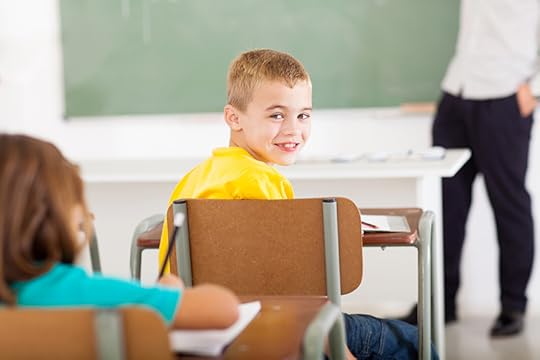
As Hardy states, “Your happiness as a person is dependent on what you measure yourself against. The antidote to being in the GAP is to measure yourself by the GAIN. More specifically, you measure your own GAINS, rather than worrying about other people. This is how you become self-determined: You have an internal reference point. You stop measuring yourself against others. You only measure yourself against yourself. You measure the GAIN, not the GAP.”
Whether we are coaching the Inner Critic of our own internal dialog or supporting our children, regularly and consistently celebrating every win, every step of progress, transforms our life’s journey from a tedious slog to a voyage of joy and satisfaction. And that creates the powerful belief that we can and will continue to grow and improve. How about a high five for yourself and those you love today? Enjoy your day, celebrating the wins, and see how much you and your children grow with each passing day.
For a thorough discussion of the social and emotional support children with dyslexia require, read my award-winning book, Raising a Child with Dyslexia: What Every Parent Needs to Know, available in softcover, hardcover, eBook, and audio.

Cardboard Box Adventures picture books are great for shared reading and can help parents establish a strong preliteracy foundation for their children. Check out the CBA Catalog for a full list of award-winning picture books, chapter books, and resources for parents and educators. Visit my Amazon author page for more information.
The post Celebrating the Wins appeared first on Author Don Winn's Blog.
August 9, 2022
We Are Not Defined by Our Challenges
We Are Not Defined by Our Challenges
You can listen to this blog.Sometimes, I’ll admit, I’m a little late to the party. This is especially true for entertainment. I mean, who has the time, when there’s so much to do, right? Still, I eventually catch on when something in the entertainment world is remarkable, and since I was recently catching up on entertainment from 2019, I saw something that made an impression on me. It reminded me of the beauty and power of the human spirit to overcome any obstacles. It reminded me that we all have gifts, and that the world is a more magnificent place when those gifts are nurtured and shared. Most importantly, it reminded me that no matter how difficult our challenges may be, we are not defined by our challenges.
Most of us have heard of or watched the show America’s Got Talent. I recently watched a YouTube clip from 2019 of a young Korean American contestant on the show named Kodi Lee. Before his performance, Kodi stood onstage beside his mom, white cane in hand. Kodi didn’t seem like the “typical” contestant in such a high-stress environment. In addition to being blind, he is also autistic.
I was so touched by the way his mom introduced her son. She said that as her son grew and she saw his love of music blossom, she recognized that her son was an entertainer. How remarkable! She didn’t let her son’s challenges limit her ability to see his potential.
And what potential! When Kodi sat down at the piano and played and sang, there wasn’t a dry eye in the house. He has a powerful voice and a gentle but certain touch on the piano. What I loved most is the way that single performance exploded the myth that since people with autism often don’t communicate their emotions to others, that must mean they don’t feel things the way neurotypical people do. Nothing could be farther from the truth! Watching him perform, it was as if I could see his heart, and it was positively dazzling.
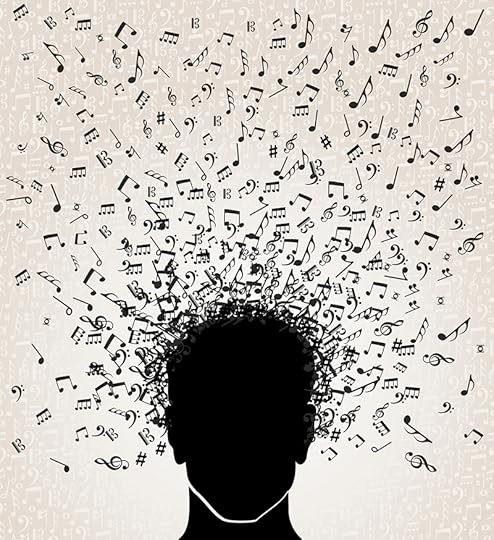
According to his website (Kodi Lee Website), Kodi possesses an audio photographic memory. This means that when he has heard a piece of music once, he remembers every detail perfectly.
My wife and I discussed afterward that in far too many instances, a child with these challenges would have been institutionalized. That has happened countless times in the past, and still happens today. How tragic! But Kodi’s family never stopped believing in who their son was as a person and in his ability to find a meaningful place in this world.
In his play As You Like It, Shakespeare wrote “All the world’s a stage.” If that’s the case, how can we as parents and as a community be watchful of ways to recognize and nurture the gifts and talents of our younger generations? Taking a lesson from the parents of Kodi Lee is a great place to start.

Oh, and what happened to Kodi Lee after his audition? After the Golden Buzzer and many successful and touching performances later, he won Season 14. The takeaway? Whether you or your loved ones have autism, sensory challenges, dyslexia, or anything else, don’t let that stop you from dreaming big dreams and making them happen. After all, we are not defined by our challenges.
Cardboard Box Adventures picture books are great for shared reading and can help parents establish a strong preliteracy foundation for their children. Check out the CBA Catalog for a full list of award-winning picture books, chapter books, and resources for parents and educators. Visit my Amazon author page for more information.
The post We Are Not Defined by Our Challenges appeared first on Author Don Winn's Blog.
July 27, 2022
The Power of Self-Limiting Beliefs
The Power of Self-Limiting Beliefs
You can listen to this blog.A man in India was once passing a group of elephants, when he suddenly stopped in his tracks. Here were these giant animals, all docilely standing near one another, each one tied by a length of rope to small sticks poked in the ground. How could such massive, strong creatures be restrained by hemp rope tied to sticks smaller than his wrist?
The animals’ trainer approached, so the man asked him how he was able to control the elephants with only sticks and rope. “Why don’t the elephants pull free? Why do they stay where you want them to stay when anyone can see that they could break free whenever they wish?”
The trainer answered, “When they are born, we place a chain around their leg, and chain them to a rock. For several days, the baby elephants pull and pull against their restraint, and eventually see that they cannot break free. The chain and rock are always stronger than the baby’s efforts. It is conditioning. Once the baby believes they won’t ever be able to move and break free, all I need to control them for the rest of their lives is a rope around their leg attached to a stick.”
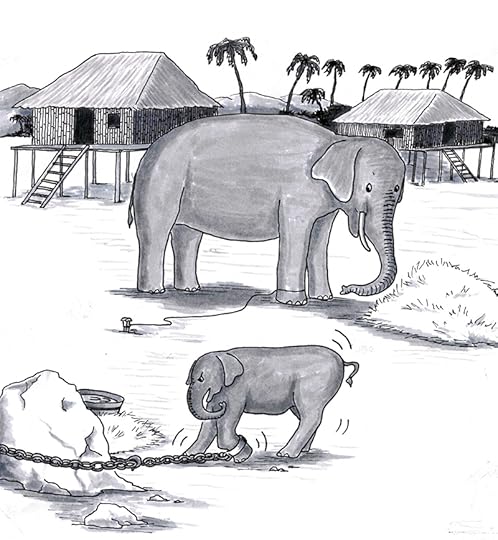
The man was shocked. Even though the elephants now had more than enough strength to escape their restraints, they never tried again, because they had failed to do so when they were young. They had stopped trying due to believing they were powerless against this limitation.
This parable has such meaning for all of us. How many beliefs that we formed in childhood shape what we believe is possible (or impossible) for us throughout our life? How many gifts and talents have been lost due to the power of self-limiting beliefs?
As dyslexics, unchallenged childhood beliefs are especially limiting and they can include any or all of the following:
I’m slowI’m stupidI’m brokenI’m ashamedI can’t do anything rightNo matter how hard I try, I can’t find a way to make my brain workIf I failed once, there’s no point in trying again, since the same thing will happenAs parents and educators, helping our children prevent or see the inaccuracy of these beliefs is the goal of social and emotional learning. Without it, they run the risk of being unaware of how powerful and strong they actually are.
With all of us making social and emotional learning a priority, may there never again be a child who believes that having dyslexia means that their only choice is to give up and stay stuck.

For a thorough discussion of the social and emotional support children with dyslexia require, read my award-winning book, Raising a Child with Dyslexia: What Every Parent Needs to Know, available in softcover, hardcover, eBook, and audio.

Cardboard Box Adventures picture books are great for shared reading and can help parents establish a strong preliteracy foundation for their children. Check out the CBA Catalog for a full list of award-winning picture books, chapter books, and resources for parents and educators. Visit my Amazon author page for more information.
The post The Power of Self-Limiting Beliefs appeared first on Author Don Winn's Blog.
July 12, 2022
Day Trip to Presidio de San Saba, Menard, TX
Day Trip to Presidio de San Saba, Menard, TX
You can listen to this blog.This is part of my A Trip in Time series. In this episode, I’m taking a day trip to Presidio de San Saba in Menard, Texas, because I like to focus on appreciating the present by exploring the past. All photos by Elizabeth Winn
History is full of surprises, upsets, and sudden turns on the path. One such historical surprise is that, despite a meteoric and successful campaign to colonize the Americas, Spain did not become the next world power after the decline of the Roman Empire. And amazingly, over 250 years after they arrived on the Gulf Coast, evidence of their presence exists only if one looks for it.
Long before Texas became a republic, Spain claimed this part of the country (Texas) as part of their colonization efforts to control the western world and its rich resources. They weren’t fazed by the fact that others occupied this land; although the various Native American tribes who had lived in these lands for centuries were formidable warriors, the Spaniards had the plans and military might to take whatever they wanted.
Presidios were garrisons or military bases built and staffed by Spain to facilitate the takeover of North America. They provided oases of safety for travelers and merchants who would camp or build residences nearby. Soldiers would build their residences just outside the walls. Traveling merchants came through to sell their wares, local farmers would sell their produce, and adventurers chasing the promise of rumored silver in the area sought safety from the marauding bands of Comanche and Wichita Indians.
Presidio San Luis de las Amarillas—later renamed Presidio de San Saba—was a wooden fortification founded in April of 1757 near present-day Menard, Texas. The endeavor was headed by Don Diego Ortiz Parilla, the son of “distinguished nobility” from Spain.






The Franciscan mission Santa Cruz de San Saba was established at the same time just a few miles downstream. The presence of both the mission and the presidio reinforced Spain’s claim to the territory. Spain had just concluded a treaty with the Lipan Apache to strengthen their defenses against mutual enemies. The Spanish hoped that by introducing the natives to Christianity, they would be more cooperative with the Spanish presence and control.
Eleven months later, on March 16, 1758, over two thousand Comanche and Wichita warriors attacked the mission. Although the presidio sent soldiers to defend the mission, the native warriors fought them off. They destroyed the church and killed two of its three priests and six mission residents.
Troops were mustered from the presidio about a year afterward to hunt down and punish the warriors responsible for the attack. Although over six hundred soldiers took on the task, the native tribes once again prevailed. After an unsuccessful four-hour battle, Ortiz Parilla retreated with his troops. He was later removed from command.
By 1760, Felipe de Rabago y Teran took command of the neglected presidio and replaced its wooden structures with stone. But even with these structural reinforcements and fresh troops, the fort was plagued by constant raids. Horses and livestock were stolen, food was stolen, and a 1767 inspection found the conditions at the fort “deplorable, the worst in the provinces.” Smallpox outbreaks added to the losses and misery of this outpost.
In 1768, Rabago y Teran, without permission, ordered the presidio abandoned. He moved his entire garrison and their families some 150 miles south to the Franciscan mission San Lorenzo de la Santa Cruz on the Nueces River.
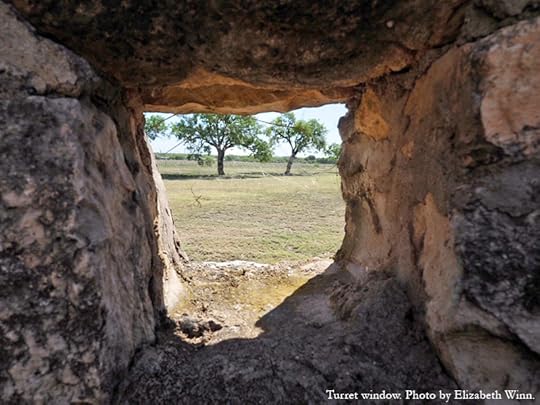




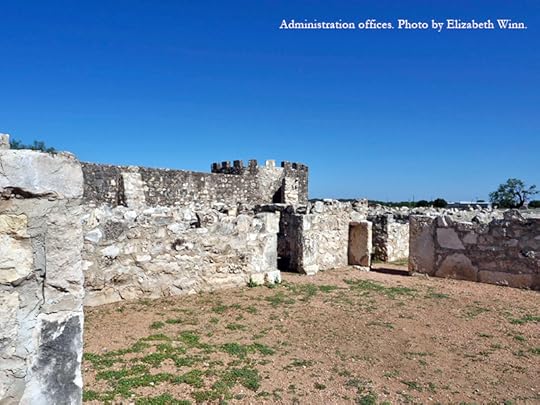
Although a new commander and troops were sent to the presidio, in 1772 the San Saba site was officially abandoned by royal decree.
Historical sites like this one can make an excellent field trip and study project for students, whether in public or home school.
Perhaps your child can write about the location from the perspective of being a child of a person assigned to the post, or a child of someone providing goods or services to the post residents. How would they have entertained themselves with no electronic devices? Would they hunt lizards, swim in the river, fish, look for bird nests, play sports, or read? Would they need to help mom stir a big pot of beans, hang the laundry on a line to dry, feed the chickens, and weed the garden? What would school have been like?
With no electricity (and therefore no air conditioning), no running water, and only wood fires to heat and cook with, how might people have coped with temperature extremes? The only way to experience music was to make it yourself or be with someone else who was singing or playing an instrument. Thought experiments like these can help today’s kids see how different life has been for others in the past, and can help them understand that until comparatively recently, comfort and convenience were not part of life. And maybe, with enough imagination, kids might be helped to build appreciation for the options and comforts they have in their own life. I know this worked for me! I visited this site in June, and the temperatures have already reached the hundreds a few times in Texas this year. I definitely came away grateful to have air conditioning in my life.
Thanks for reading about my day trip to Presidio de San Saba in Menard, Texas. For more historical blogs, check out the Trip in Time Blog Archives
Cardboard Box Adventures picture books are great for shared reading and can help parents establish a strong preliteracy foundation for their children. Check out the CBA Catalog for a full list of award-winning picture books, chapter books, and resources for parents and educators. Visit my Amazon author page for more information.
Reference Links:
https://www.presidiodesansaba.org/index.html
https://www.nps.gov/subjects/travelspanishmissions/mission-santa-cruz-de-san-saba-and-presidio-san-luis-de-las-amarillas.htm
https://www.texasbeyondhistory.net/presidio/
https://www.tshaonline.org/handbook/entries/san-luis-de-las-amarillas-presidio
https://www.tshaonline.org/handbook/entries/ortiz-parrilla-diego
https://swco.ttu.edu/medieval/Presidio.html
The post Day Trip to Presidio de San Saba, Menard, TX appeared first on Author Don Winn's Blog.
June 21, 2022
Dyslexia and Relationships
Dyslexia and Relationships.
It’s a fact: many folks struggle with their relationships, especially in marriage. All too often, couples split up or divorce. As a child from a broken home, I was determined never to let that happen when I got married.
You can listen to this blog.And then real life hit, and marriage was much more difficult than I thought it would be. Things were rocky for both of us because there was so much we didn’t know. We didn’t know how to communicate effectively. We didn’t know how different we were: we each assumed that the other person took in information and made decisions the same way. We didn’t know how differently we managed stress. We didn’t know how much our experiences from childhood shaped our beliefs and expectations. We didn’t know the importance of managing our perspectives, so that we didn’t immediately take everything the other person did personally. And we didn’t know anything about dyslexia, and how that would set the tone for everything that was to come later. Having dyslexia as an adult had a larger effect on my relationships than I ever realized until fairly recently.
But with a lot of love, patience, respect, and appreciation, we have crafted a successful, happy marriage. Nearly 41 years’ worth! A few years ago, my wife and I cowrote a blog we titled Living with an Adult with Dyslexia about what worked for us and what didn’t.
A couple of months ago, Darren Clark, the Director of Succeed With Dyslexia, read our story and wanted to interview us. What a great experience! Darren is a great host, personable and curious, and he also happens to be dyslexic. He wanted to share our success story as part of the UK’s May 2022 Mental Health Awareness Month, for their “Dyslexia and Me” campaign.
Relationships are challenging for all of us, but especially for couples in which one person is neurotypical and the other is not. My wife and I know far too many couples that have split up because the non-dyslexic mate makes assumptions about their dyslexic mate’s character, intelligence, motivation, or even their worth as a human being. The worst-case scenario is that those assumptions lead to disappointment, withdrawal of tender affection, disrespect, then contempt, and ultimately to splitting up.

As we discuss in our interview, learning all you can about the brain differences you or your partner have—whether it’s dyslexia, ASD, ADD/ADHD, or something else—is the beginning of turning things in a positive direction. Enjoy, and thanks for watching!
Watch our interview with Darren Clark of Succeed with Dyslexia here: Couple Goals: Living with Dyslexia
Thanks for reading about dyslexia and relationships. For a list of my previous dyslexia articles, click here: Dyslexia Articles
For a thorough discussion of dyslexia, you may enjoy the second edition of my award-winning book Raising a Child with Dyslexia: What Every Parent Needs to Know, available in softcover, hardcover, eBook, and audio. In addition to facts on testing and accommodation, my book gives you the tools to provide the social and emotional support children with dyslexia require. The second edition has the same great content as the first edition but now contains a very helpful bibliography and index and an exciting new cover.

And to learn more about how every student best learns to read, you may also enjoy Failing Students or Failing Schools? A Parent’s Guide to Reading Instruction and Intervention, by reading specialist and shortlisted World Literacy Award nominee Faith Borkowsky.

Cardboard Box Adventures picture books are great for shared reading and can help parents establish a strong preliteracy foundation for their children. Check out the CBA Catalog for a full list of award-winning picture books, chapter books, and resources for parents and educators. Visit my Amazon author page for more information.
The post Dyslexia and Relationships appeared first on Author Don Winn's Blog.



